Abstract
1. A single sucrose-gap voltage-clamp technique was used to control the membrane potential and to measure current in rabbit sino-atrial (SA) strips. K+ activity in the extracellular space was simultaneously measured using K+-selective micro-electrodes. 2. Using double-barrelled K+ selective micro-electrodes it was possible to measure the time course of accumulation or depletion of K+ accompanying a single action potential without complications arising from mechanical or electrical artifacts. 3. K+ activity in the extracellular space increased during the action potential and then decreased to base-line levels during the diastolic depolarization phase. Single beat accumulations of 0.1-0.4 M could be measured. 4. The magnitude of accumulation or depletion of K+ depended upon the membrane potential such that K+ accumulated at potentials positive to -50 mV (K+ efflux greater than K+ uptake) and was depleted from the extracellular space at potentials negative to -50 mV (K+ efflux less than K+ uptake). 5. The rate of K+ depletion was fairly constant during the time course of a clamp step within the range of diastolic depolarization (-55 to -75 mV) even though the accompanying membrane current showed marked time-dependent kinetics. 6. The total membrane conductance measured during the time course of the diastolic depolarization or during the time course of activation of time-dependent 'pace-maker' current remained fairly constant or increased. 7. No reversal potential for the time-dependent 'pace-maker' current could be measured at EK in solutions containing 2.7, 5.4 and 8.1 mM-K+. 8. These results do not support the turn-off a K+ conductance as the primary mechanisms for the generation of the pace-maker potential in SA nodal tissue; rather the results are more consistent with the idea that activation of an inward current, with large positive equilibrium potential, is responsible for pace-making activity.
Full text
PDF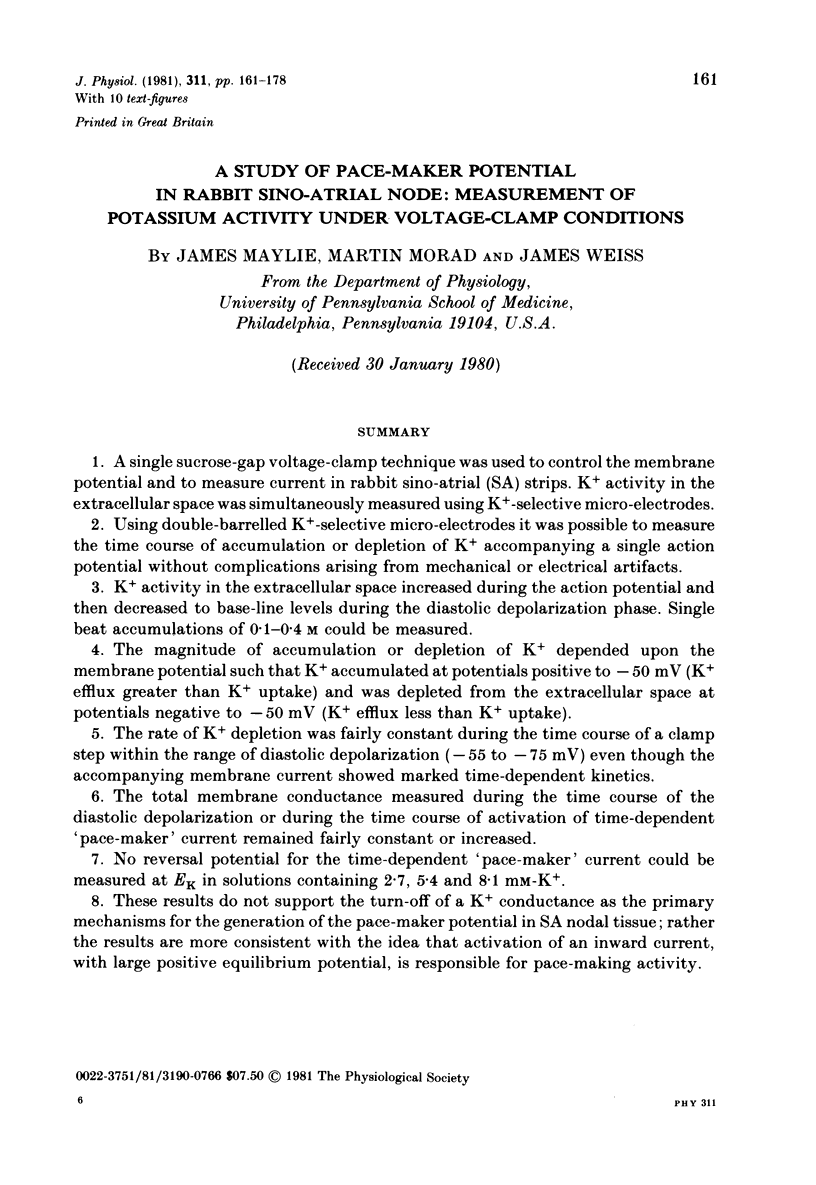
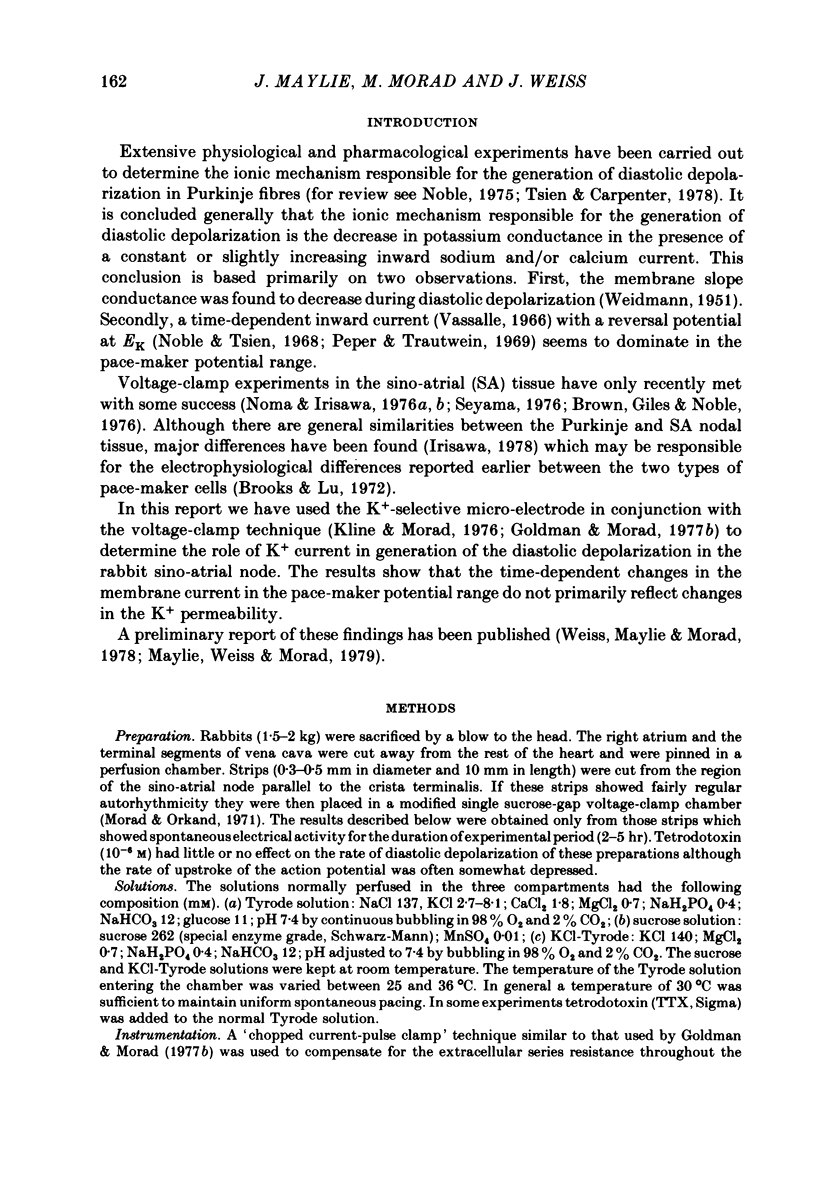
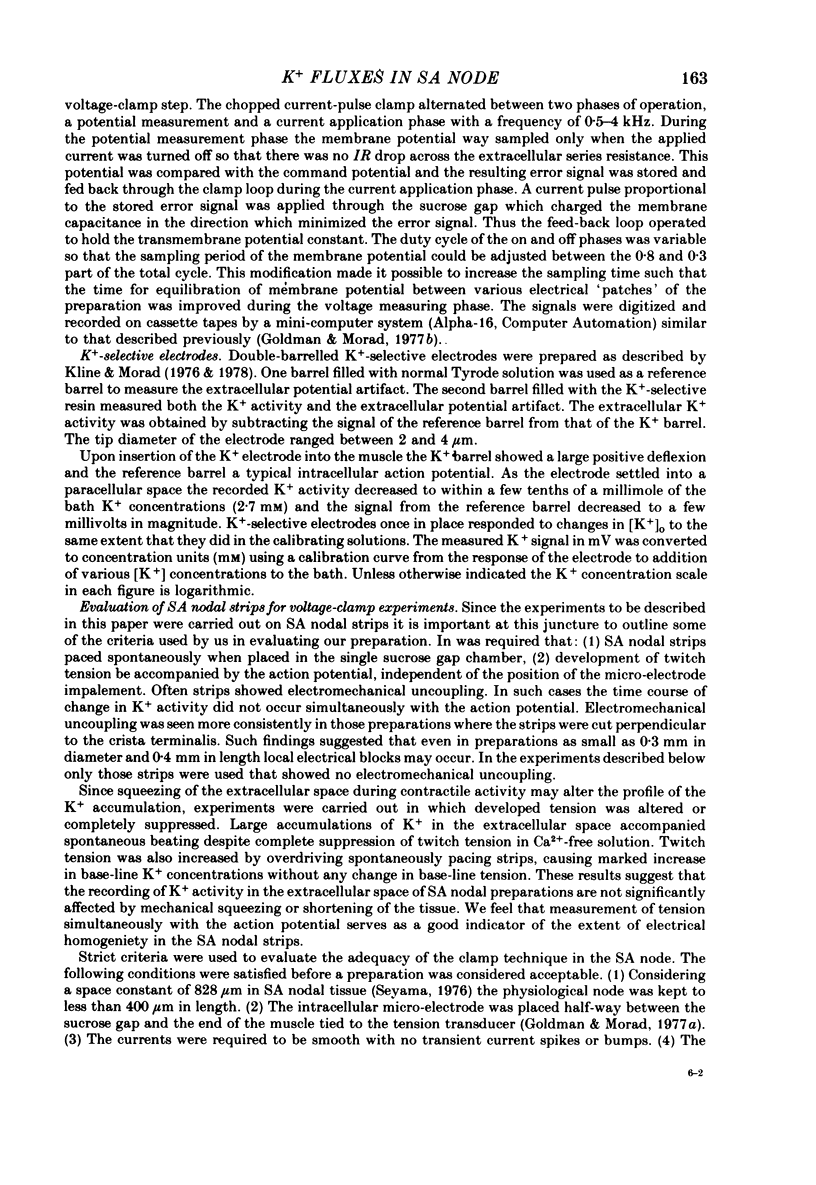
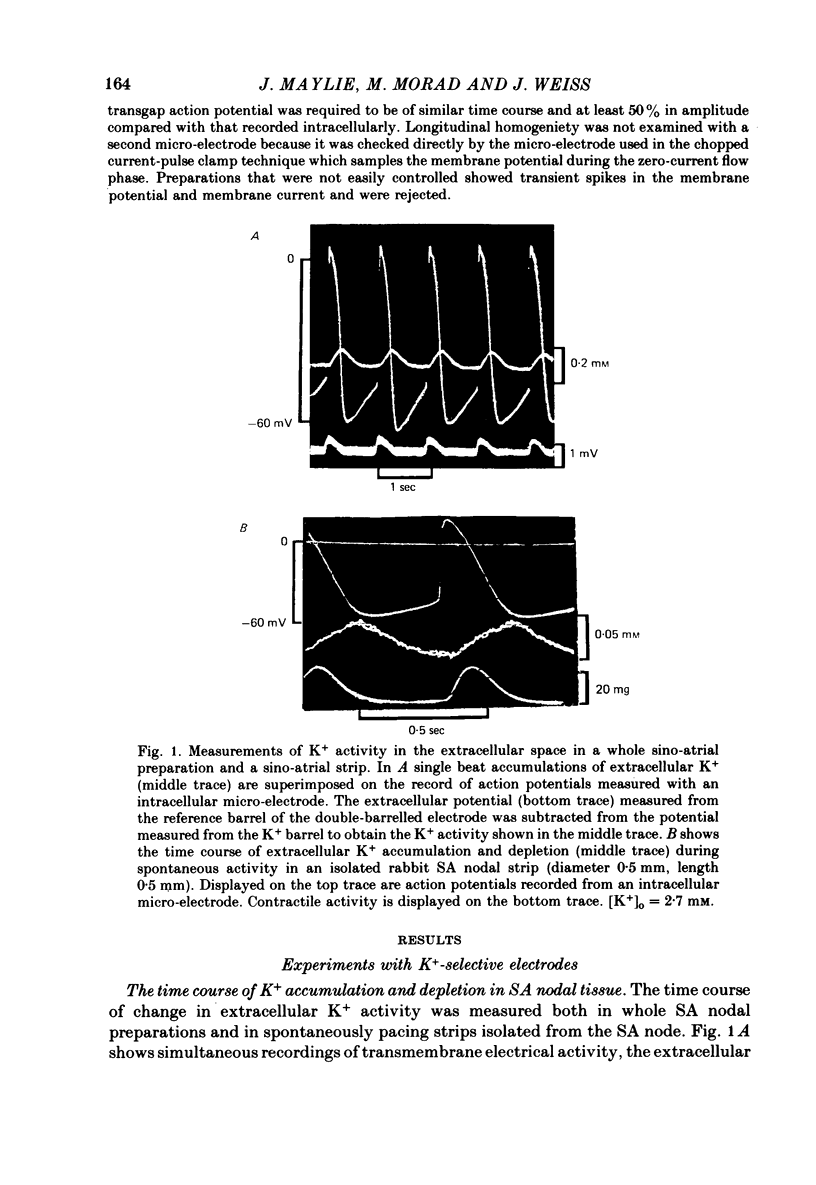

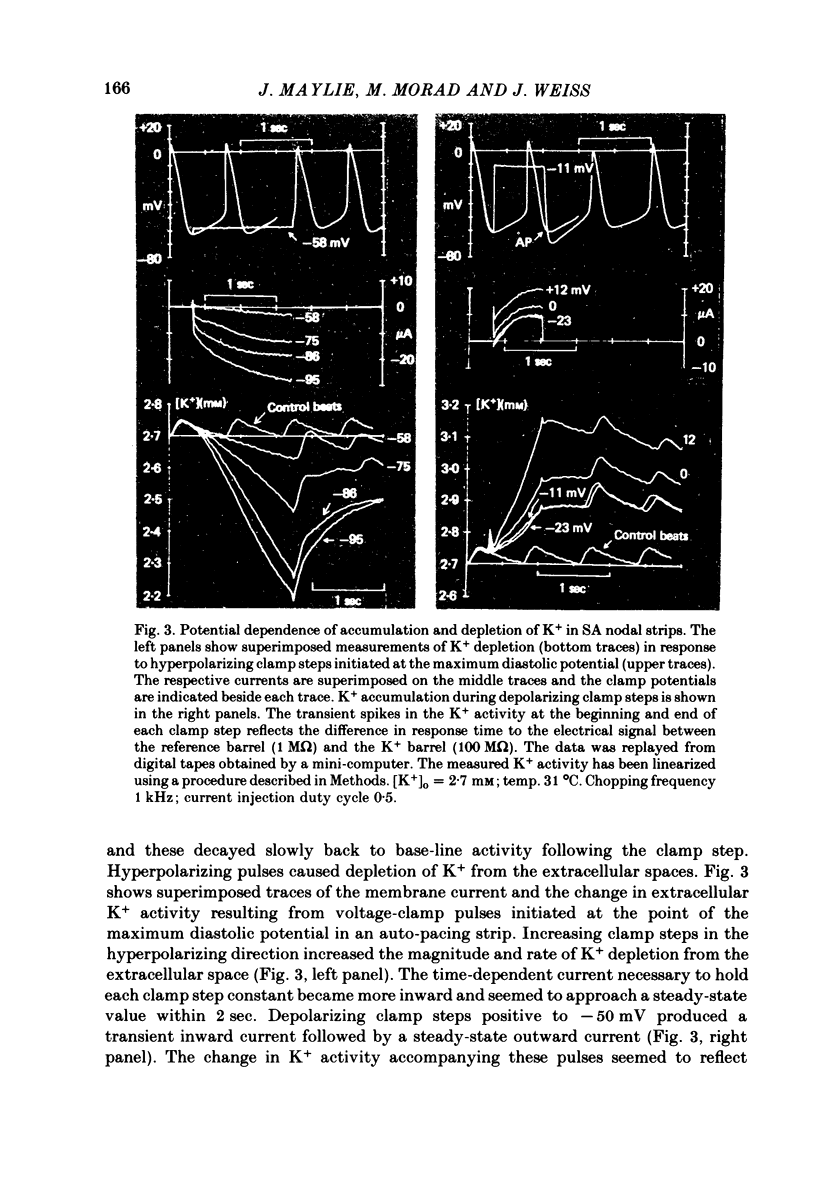
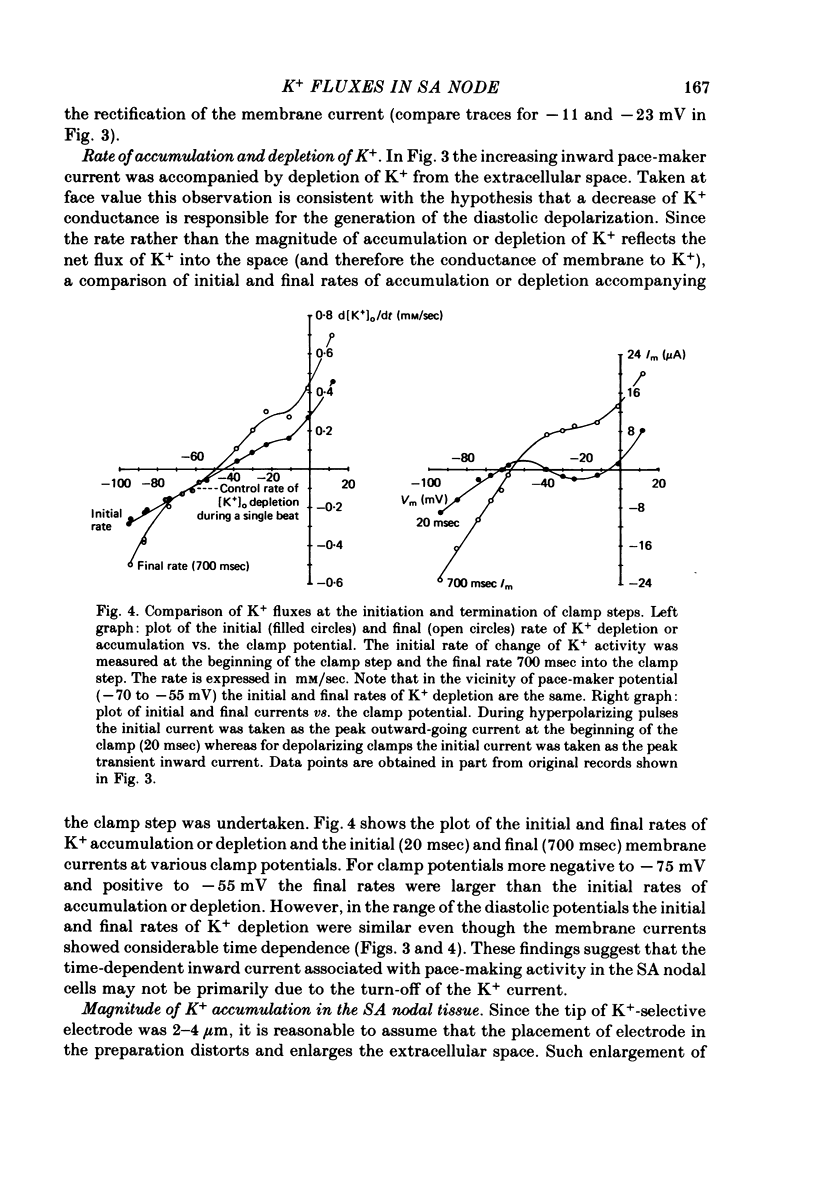
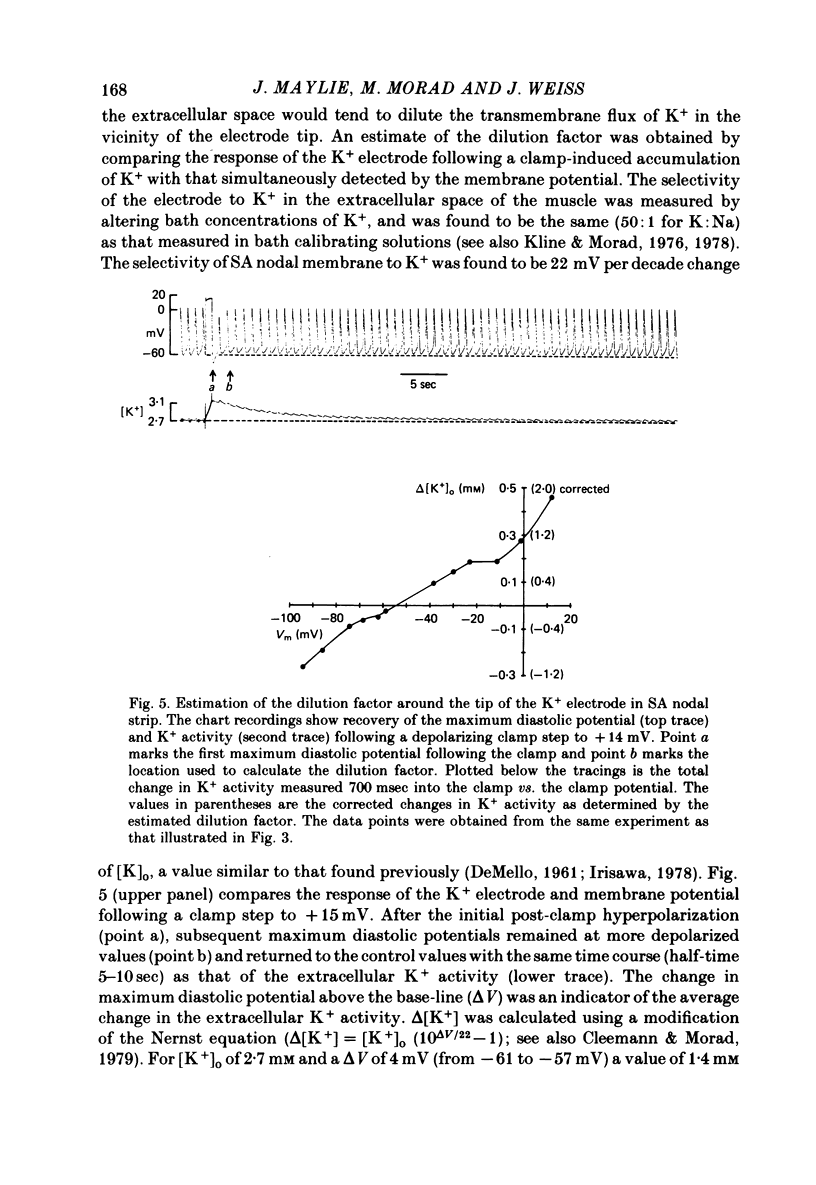
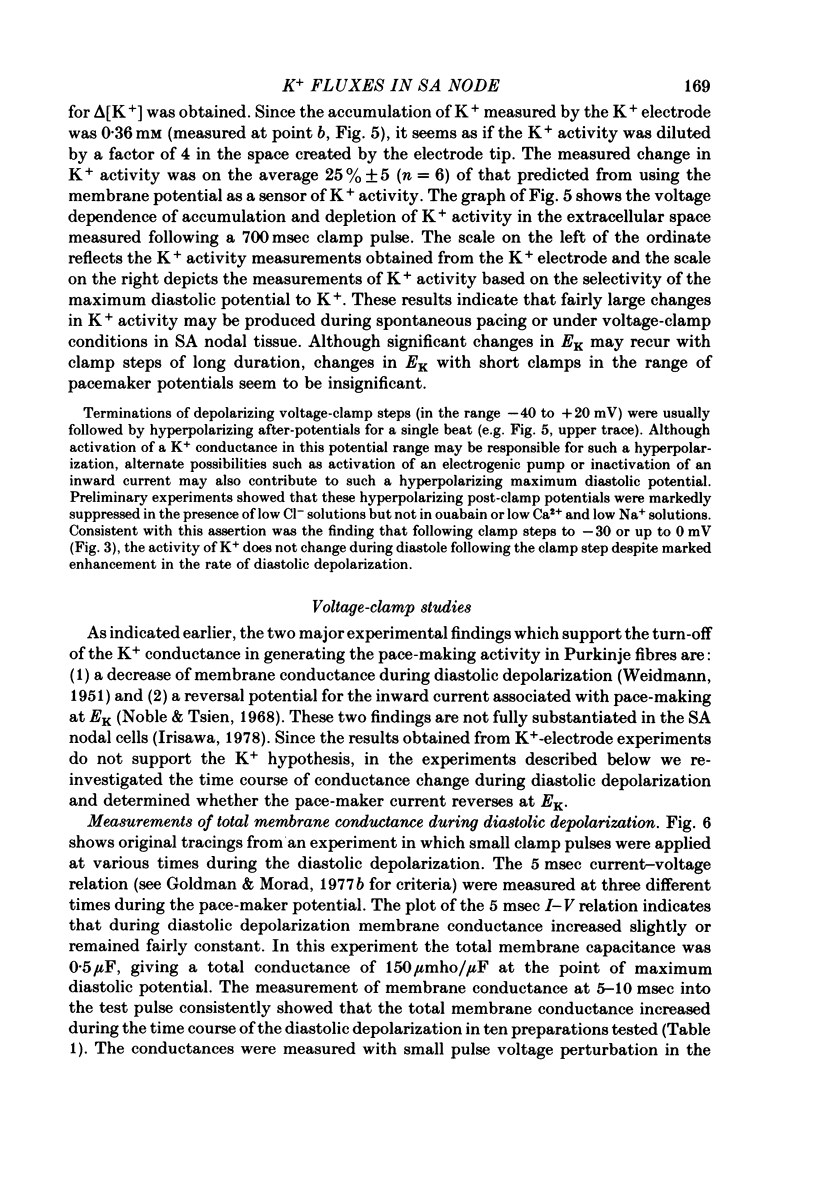

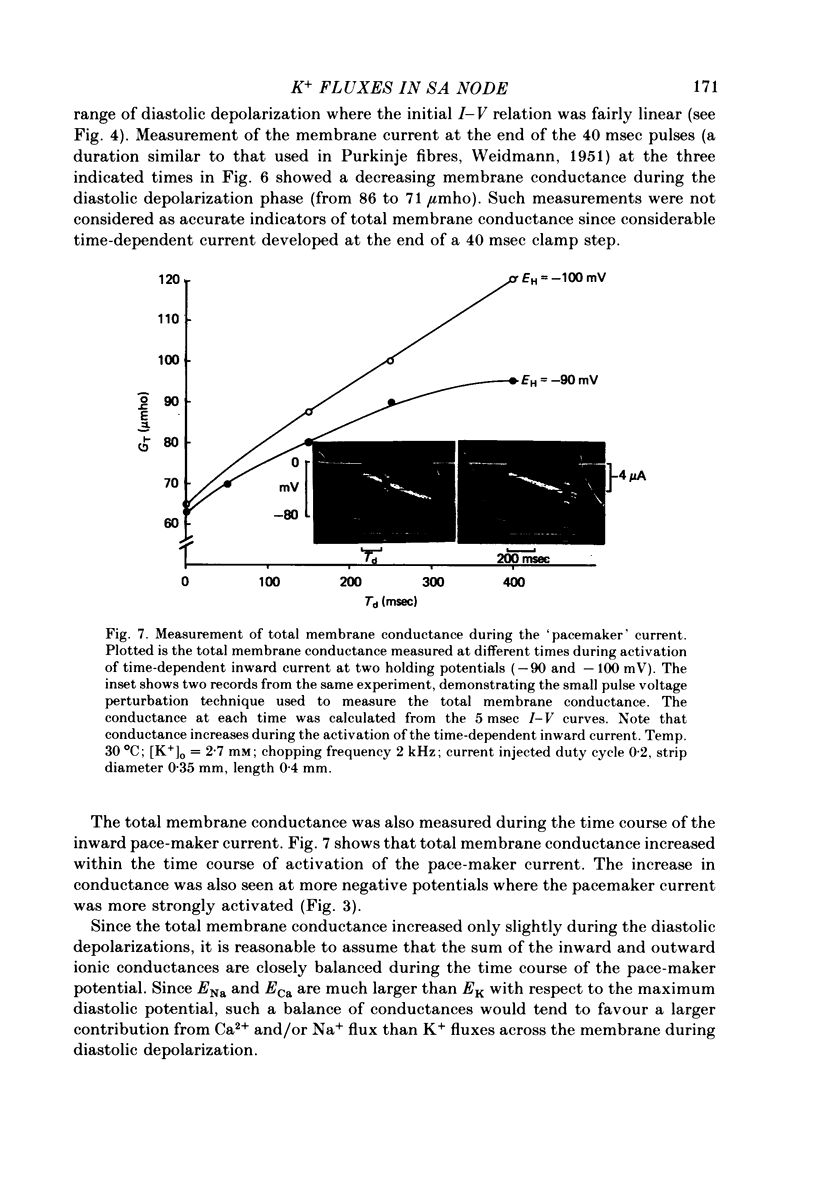
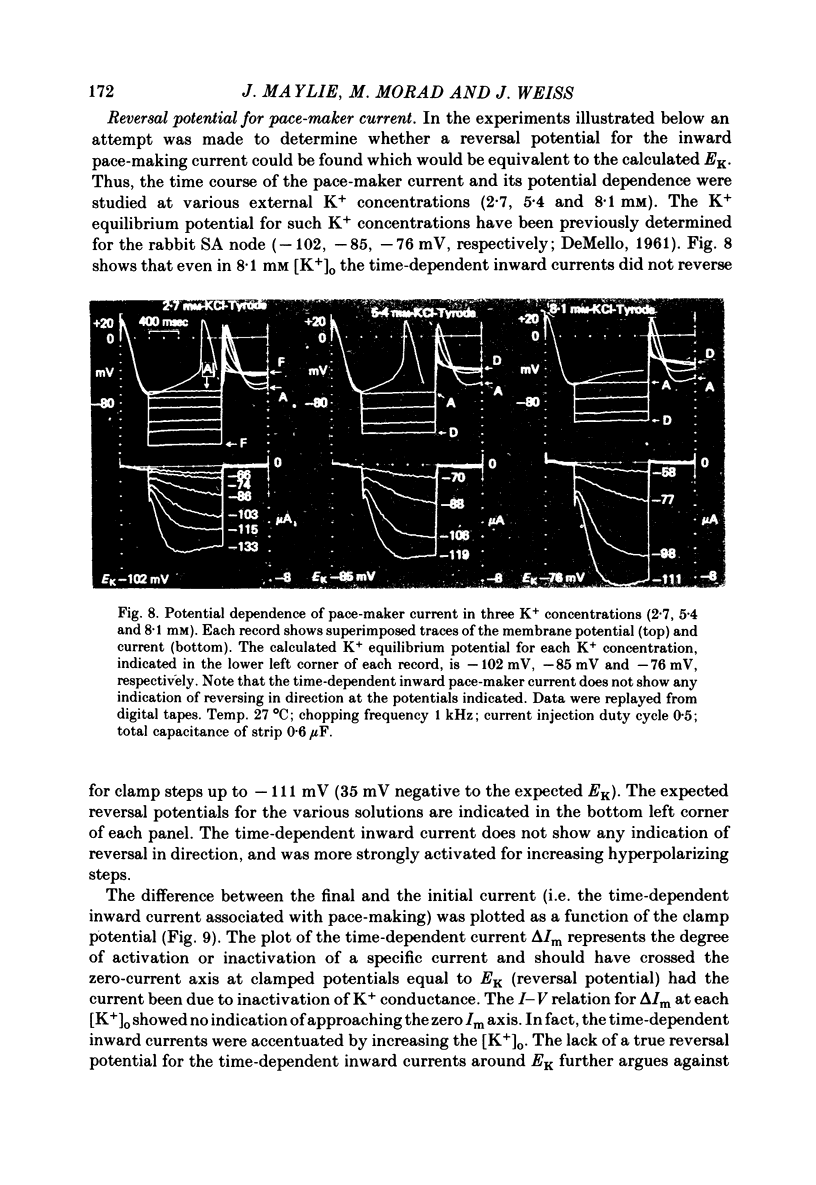
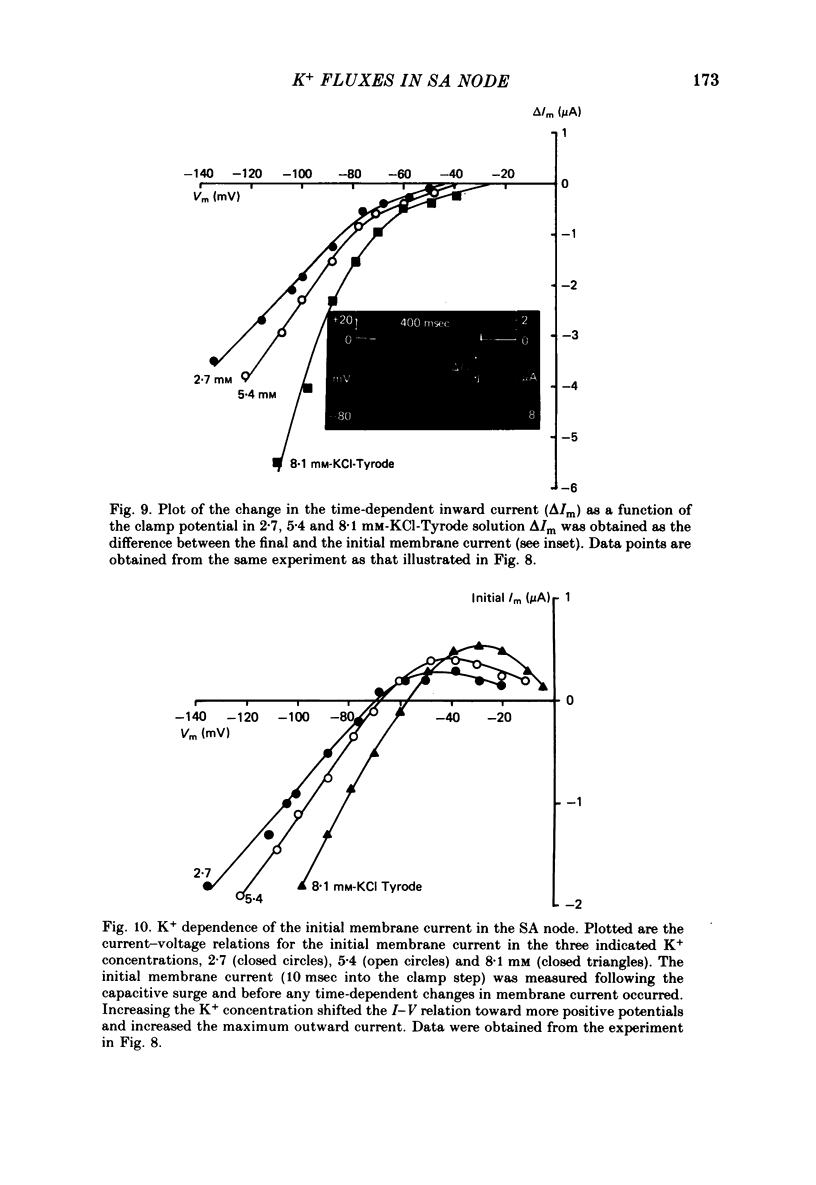
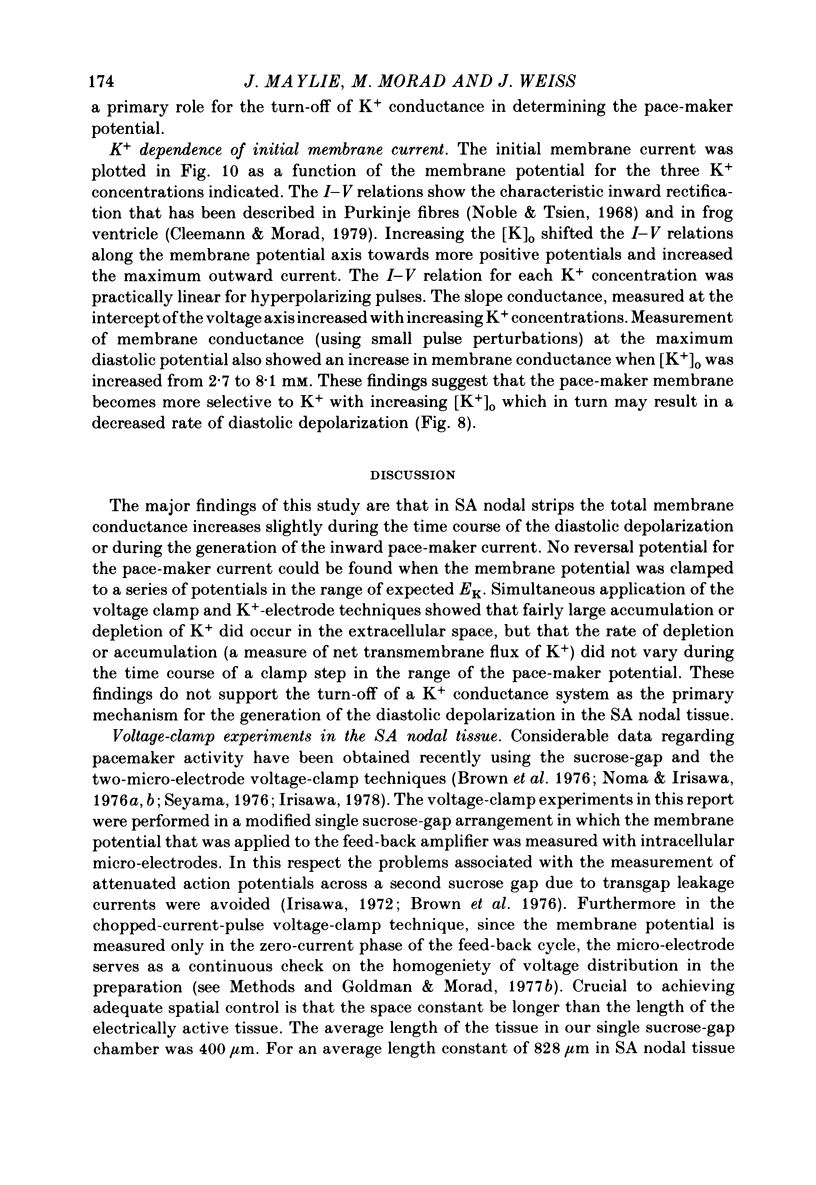
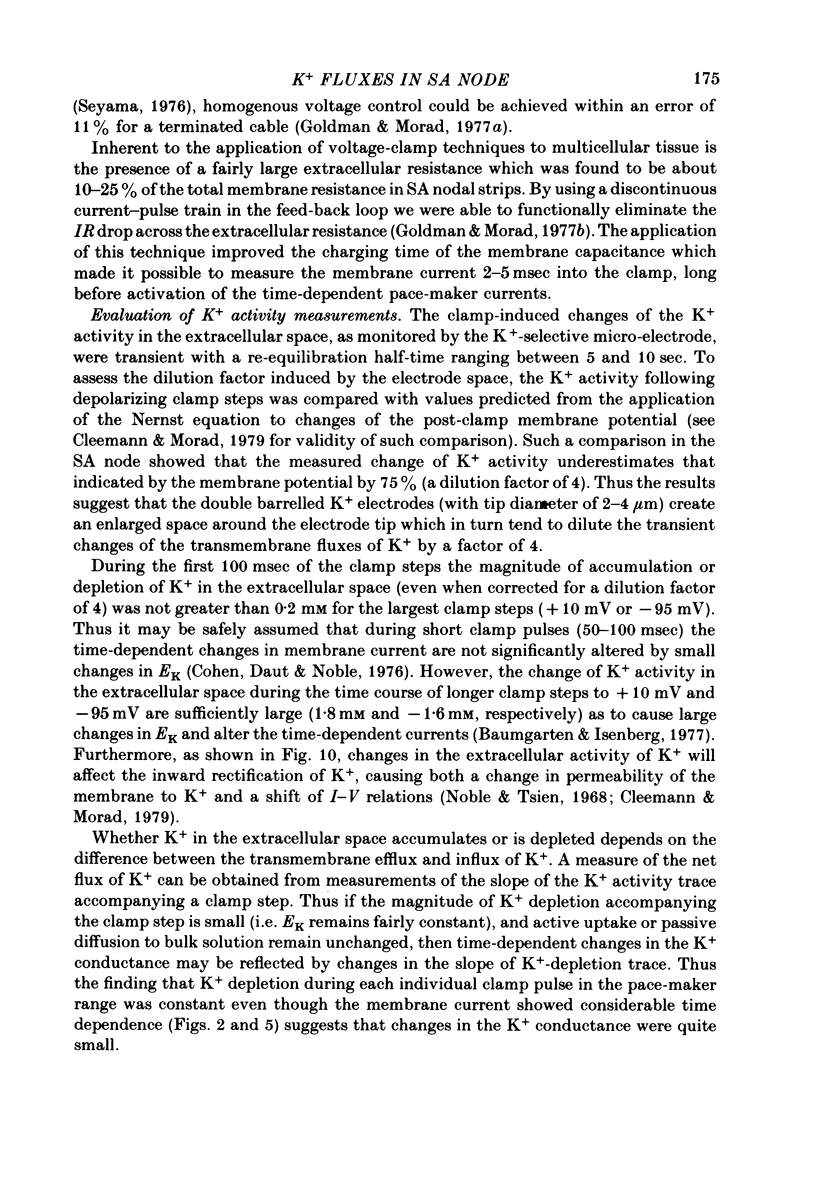
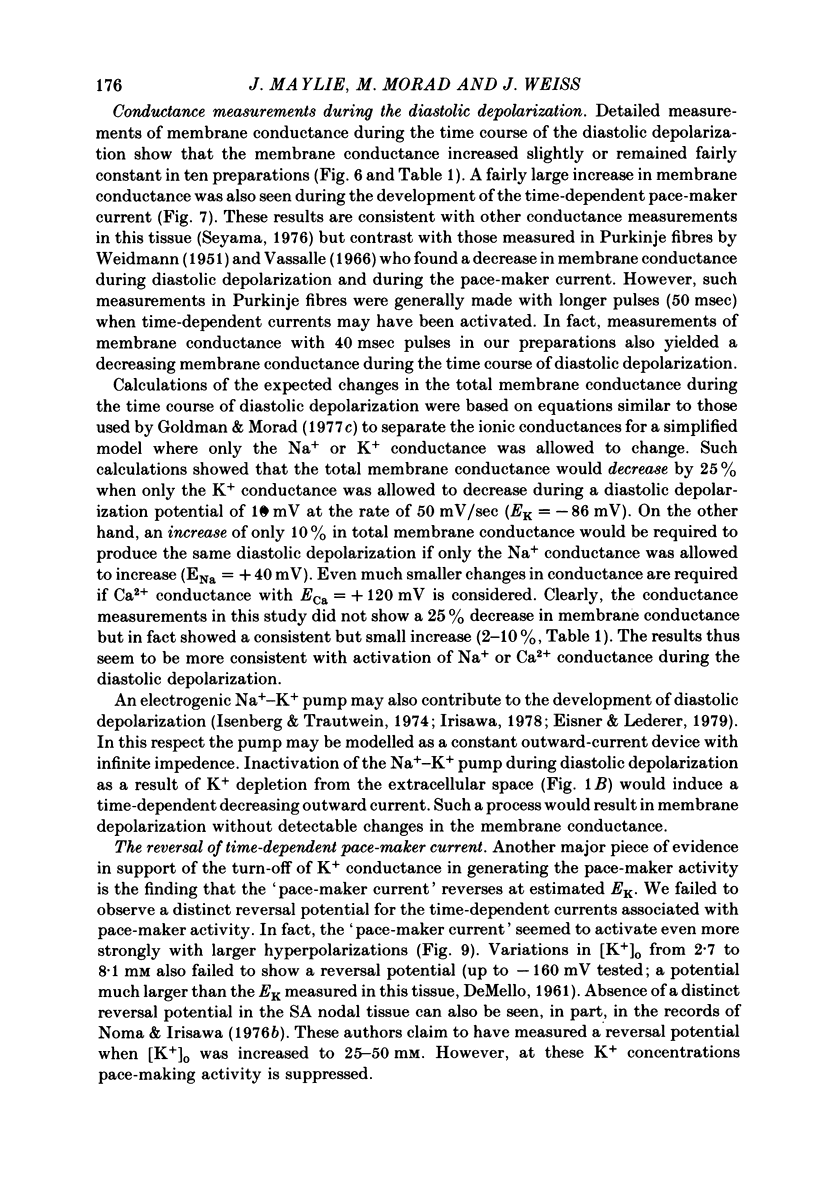
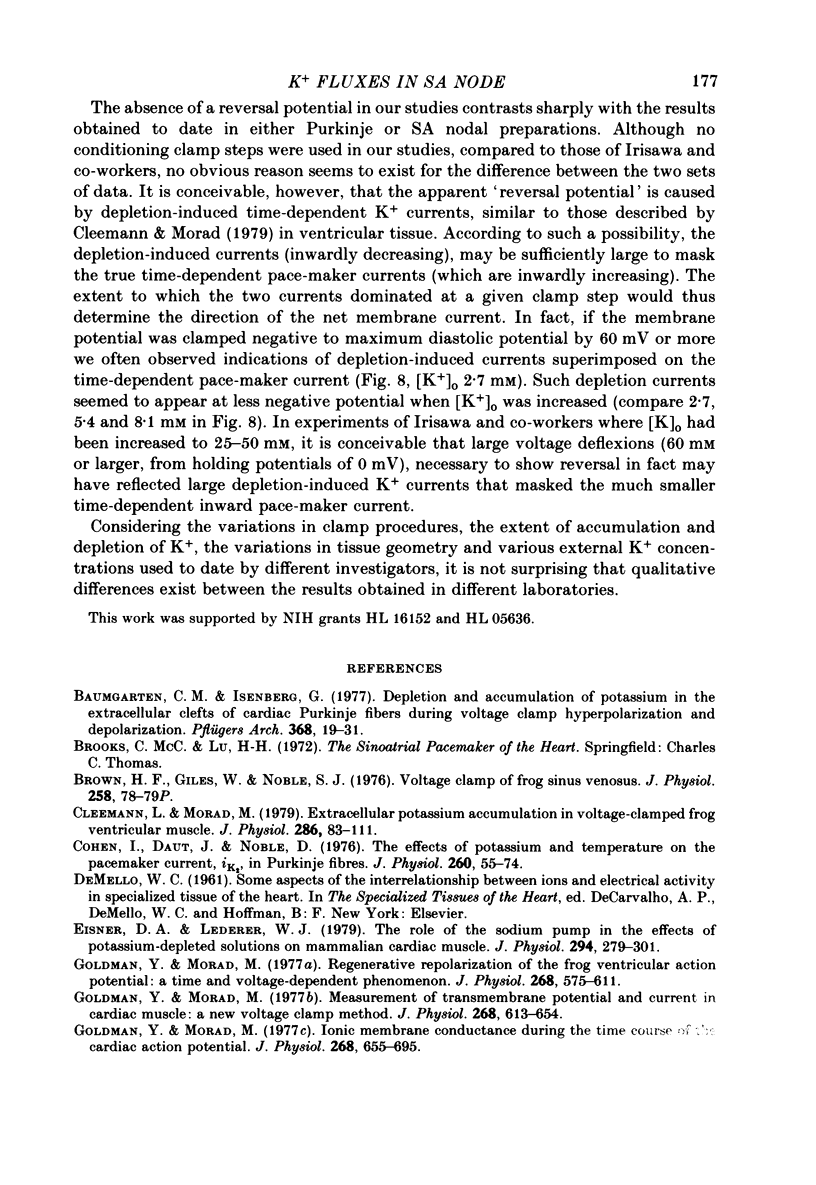
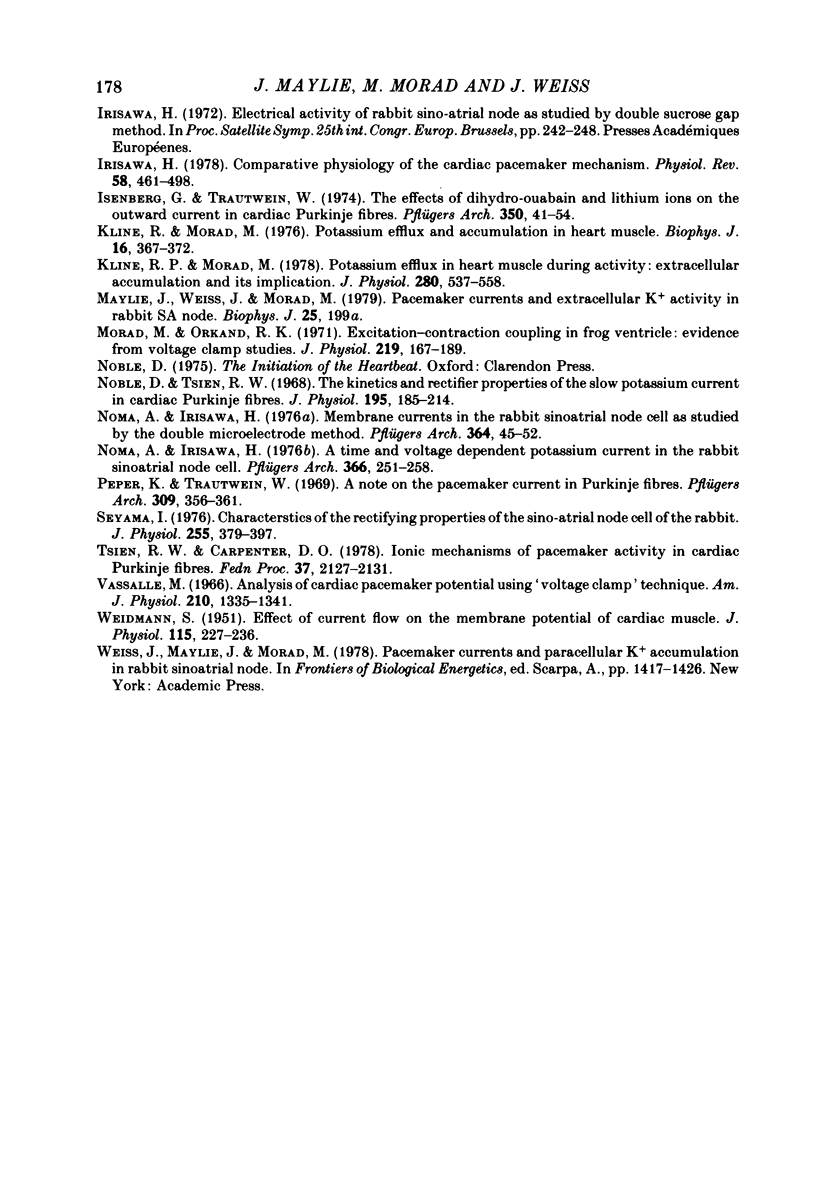
Selected References
These references are in PubMed. This may not be the complete list of references from this article.
- Baumgarten C. M., Isenberg G. Depletion and accumulation of potassium in the extracellular clefts of cardiac Purkinje fibers during voltage clamp hyperpolarization and depolarization. Pflugers Arch. 1977 Mar 11;368(1-2):19–31. doi: 10.1007/BF01063450. [DOI] [PubMed] [Google Scholar]
- Brown H. F., Giles W., Noble S. J. Proceedings: Voltage clamp of frog sinus venosus. J Physiol. 1976 Jun;258(2):78P–79P. [PubMed] [Google Scholar]
- Cleemann L., Morad M. Extracellular potassium accumulation in voltage-clamped frog ventricular muscle. J Physiol. 1979 Jan;286:83–111. doi: 10.1113/jphysiol.1979.sp012608. [DOI] [PMC free article] [PubMed] [Google Scholar]
- Cohen I., Daut J., Noble D. The effects of potassium and temperature on the pace-maker current, iK2, in Purkinje fibres. J Physiol. 1976 Aug;260(1):55–74. doi: 10.1113/jphysiol.1976.sp011504. [DOI] [PMC free article] [PubMed] [Google Scholar]
- Eisner D. A., Lederer W. J. The role of the sodium pump in the effects of potassium-depleted solutions on mammalian cardiac muscle. J Physiol. 1979 Sep;294:279–301. doi: 10.1113/jphysiol.1979.sp012930. [DOI] [PMC free article] [PubMed] [Google Scholar]
- Goldman Y., Morad M. Ionic membrane conductance during the time course of the cardiac action potential. J Physiol. 1977 Jul;268(3):655–695. doi: 10.1113/jphysiol.1977.sp011876. [DOI] [PMC free article] [PubMed] [Google Scholar]
- Goldman Y., Morad M. Measurement of transmembrane potential and current in cardiac muscle: a new voltage clamp method. J Physiol. 1977 Jul;268(3):613–654. doi: 10.1113/jphysiol.1977.sp011875. [DOI] [PMC free article] [PubMed] [Google Scholar]
- Goldman Y., Morad M. Regenerative repolarization of the frog ventricular action potential: a time and voltage-dependent phenomenon. J Physiol. 1977 Jul;268(3):575–611. doi: 10.1113/jphysiol.1977.sp011874. [DOI] [PMC free article] [PubMed] [Google Scholar]
- Irisawa H. Comparative physiology of the cardiac pacemaker mechanism. Physiol Rev. 1978 Apr;58(2):461–498. doi: 10.1152/physrev.1978.58.2.461. [DOI] [PubMed] [Google Scholar]
- Isenberg G., Trautwein W. The effect of dihydro-ouabain and lithium-ions on the outward current in cardiac Purkinje fibers. Evidence for electrogenicity of active transport. Pflugers Arch. 1974;350(1):41–54. doi: 10.1007/BF00586737. [DOI] [PubMed] [Google Scholar]
- Kline R. P., Morad M. Potassium efflux in heart muscle during activity: extracellular accumulation and its implications. J Physiol. 1978 Jul;280:537–558. doi: 10.1113/jphysiol.1978.sp012400. [DOI] [PMC free article] [PubMed] [Google Scholar]
- Kline R., Morad M. Potassium efflux and accumulation in heart muscle. Evidence from K +/- electrode experiments. Biophys J. 1976 Apr;16(4):367–372. doi: 10.1016/S0006-3495(76)85694-9. [DOI] [PMC free article] [PubMed] [Google Scholar]
- Morad M., Orkand R. K. Excitation-concentration coupling in frog ventricle: evidence from voltage clamp studies. J Physiol. 1971 Dec;219(1):167–189. doi: 10.1113/jphysiol.1971.sp009656. [DOI] [PMC free article] [PubMed] [Google Scholar]
- Noble D., Tsien R. W. The kinetics and rectifier properties of the slow potassium current in cardiac Purkinje fibres. J Physiol. 1968 Mar;195(1):185–214. doi: 10.1113/jphysiol.1968.sp008454. [DOI] [PMC free article] [PubMed] [Google Scholar]
- Noma A., Irisawa H. A time- and voltage-dependent potassium current in the rabbit sinoatrial node cell. Pflugers Arch. 1976 Nov 5;366(2-3):251–258. doi: 10.1007/BF00585886. [DOI] [PubMed] [Google Scholar]
- Noma A., Irisawa H. Membrane currents in the rabbit sinoatrial node cell as studied by the double microelectrode method. Pflugers Arch. 1976 Jun 29;364(1):45–52. doi: 10.1007/BF01062910. [DOI] [PubMed] [Google Scholar]
- Peper K., Trautwein W. A note on the pacemaker current in Purkinje fibers. Pflugers Arch. 1969 Jun 19;309(4):356–361. doi: 10.1007/BF00587758. [DOI] [PubMed] [Google Scholar]
- Seyama I. Characteristics of the rectifying properties of the sino-atrial node cell of the rabbit. J Physiol. 1976 Feb;255(2):379–397. doi: 10.1113/jphysiol.1976.sp011285. [DOI] [PMC free article] [PubMed] [Google Scholar]
- Tsien R. W., Carpenter D. O. Ionic mechanisms of pacemaker activity in cardiac Purkinje fibers. Fed Proc. 1978 Jun;37(8):2127–2131. [PubMed] [Google Scholar]
- Vassalle M. Analysis of cardiac pacemaker potential using a "voltage clamp" technique. Am J Physiol. 1966 Jun;210(6):1335–1341. doi: 10.1152/ajplegacy.1966.210.6.1335. [DOI] [PubMed] [Google Scholar]
- WEIDMANN S. Effect of current flow on the membrane potential of cardiac muscle. J Physiol. 1951 Oct 29;115(2):227–236. doi: 10.1113/jphysiol.1951.sp004667. [DOI] [PMC free article] [PubMed] [Google Scholar]


